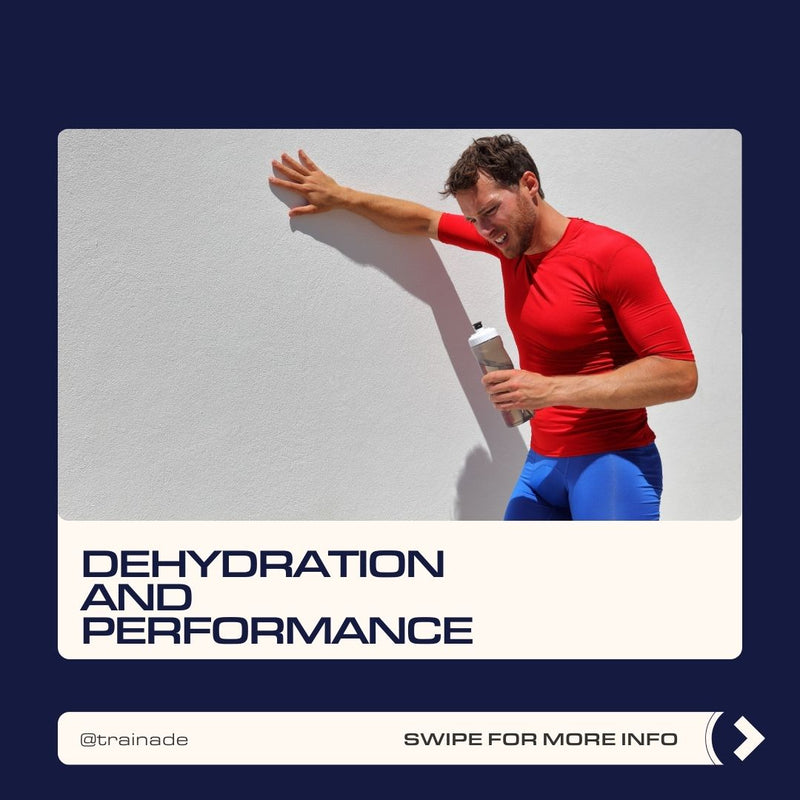Hydration is often seen as an easy thing to get right. We sweat when we train and all we have to do is drink enough water and electrolytes to replace what we sweat out.
But in actuality, this is trickier than people think, with only half of sweat loss generally being replaced during exercise [1].
Through current literature, we know that a loss of 1-2% of total body mass in water can lead to impaired cognitive function, alertness, and physical performance [1]. Practically, this means worse decision making on the field, slower reaction times, and slower sprint speeds.
On top of this, we lose electrolytes such as sodium, as well as chloride, potassium, calcium, and magnesium to a smaller extent. This can exacerbate the detrimental effects of dehydration while also increasing the likelihood of cramp [1].
But why is hydration important specifically for soccer?
A study in 2019 looked to identify the relative risk of hypohydration (dehydration) in different sports [2]. In this study, they identified that the risk of hypohydration during training was moderate, however, during competition it was high. This risk was identified due to the limited availability of fluid during matches as your only time to rehydrate was during half time compared to training where you can continuously drink during breaks [2].
When considering the moderate to high risk of hypohydration as well as the detrimental effects, it becomes clear that we need to maximise our hydration to give ourselves the best chance of staying hydrated during both training and games.
How much do soccer players sweat?
A study in 2019 looked at 268 soccer players to identify the average sweat rate of players, as well as the rate of sodium loss [3].
From this, they found that the average sweat rate was 0.94 ± 0.38 L/h while the average rate of sodium loss was 34.6 ± 19.2 mmol/h [3].
Although this gives a decent guideline, it is important to note that sweat rate and rate of sodium loss is extremely individualised and differs for everyone depending on their heat acclimation, environmental temperature, and current training level.
To find your own sweat rate, weigh yourself before and after training and note how much fluid you drank during the session. From here, calculate how much sweat you lost and convert that into litres per hour.
To find out your rate of salt loss, consider taking a sweat test. For a more basic approach, if you notice your shirt or cap has salt stains on them after training, it is likely you are a high salt sweater.
Hydration strategies around training and matches
Pre-Training/Match
· Sip on water throughout the day. As a rough guideline, the body can take up around 250ml every 15 minutes.
· Ideally, you want to get your urine to a pale yellow without chugging water.
· Consider using an electrolyte product to help retain consumed fluids while adding palatability while drinking.
During Training/Match
· Bring a water bottle with electrolytes to training and drink whenever you are given a chance.
· Use your sweat rate to find out how much fluid you will lose and try to replace as much as you can during the session.
· During a game, halftime is your only chance to rehydrate and refuel. Electrolyte and carbohydrate replacement is essential. Consider using an electrolyte product as well as having some form of high GI carbohydrates such as an energy gel.
Post-Training/Match
· Consider how much fluid you have had since before training or a match and calculate your fluid needs to rehydrate.
· Ideally, you want to replace 1.5x the fluid lost within a few hours of training or a match.
· It is likely you will be more dehydrated after a soccer match than in training and therefore fluid replacement should be a key consideration in your post-game nutrition.
References (Digital Object Identifier)
[1] 10.3390/sports5020028
[2] 10.3390/nu11071550
[3] 10.1080/02640414.2019.1633159




